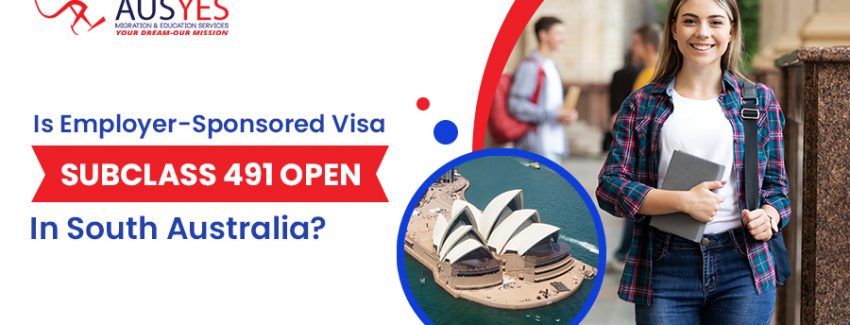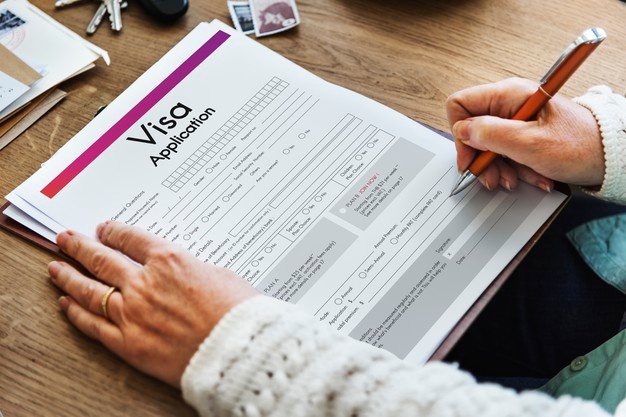It is not hidden that COVID-19 has shredded the lives of people not only in a particular region but across the globe. The scenarios during and after the pandemic are heart-wrenching, isn’t it? But, as time is passing, things are on their way to getting normal again. Having said that, if we talk about immigration in South Australia, then even things have started to change there.
The South Australian Government has currently extended. 70 more roles to its Skilled Occupation List, which is a part of Employer-Sponsored Visa, making a total of 109 occupations that are now open for offshore skilled migration to South Australia. So, even if you are one of those who are looking to move to South Australia while being offshore, for now, it is your chance. Grab it and move to your detained destination without any hassle. Let us now don’t waste any more time and directly move on to the crux of the writing.
What Are The Federal Government Requirements For Visa Subclass 491 in South Australia?
For this visa, both the federal and state governments have different requirements. Have a look at what requirements the federal government asks for:
- When nomination, you must be under 45 years of age.
- You must have exceptional proficiency in the English Language.
- You must get a full skills assessment for the skilled occupation that you have opted for.
- You must have got at least 65 points in the skilled migration points test.
These are some of the requirements that must be fulfilled to get approval by the federal/central government of Australia.
What Are The State Government Requirements For 491 Visa South Australia?
Likewise the federal government’s requirements there are some specific requirements for the state government as well. These are:
Residence requirements
By applying, you’re giving an indication that you intend to live and work in South Australia for a long-term period.
If you are in Australia but do not currently live in South Australia, you can only apply through the Talent and Innovators Employment Program (see below).
If you currently live outside of Australia, check the South Australian Qualified Professions list to see if your profession is available to candidates working offshore. Eligible offshore applicants must apply for registration of interest (ROI).
Occupation
You must have a profession listed on the South Australian Qualifications List and be eligible for that profession.
Skills assessment
You must have a valid and positive assessment of general qualified migration skills from the relevant authority. Skills must be assessed according to your designated profession. In addition, it must have been issued within the last three years or, if the skills assessment body has specified a shorter period of validity, the skills assessment will only be valid until that date.
Work experience
You must meet the work experience requirement specified for the profession you have specified. Qualified work experience must be gained at the end of the course and must meet the requirement of at least 20 hours per week or 40 hours of paid work in your assigned or closely related profession. However, if you already work in South Australia or are a South Australian graduate, you may be eligible for exemptions or exceptions from the work experience requirement as set out in the professional requirements.
English
You must meet the minimum English language requirements listed for your profession.
If you are currently working in a skilled job in South Australia, you must speak at least a competent English language. However, if the profession you specify requires registration or a license to work in South Australia, you will need to ensure that you meet the English language requirements set by the registration or licensing departments to work in South Australia.
If you have a passport from the United States, the United Kingdom, Ireland, Canada, or New Zealand, you do not need to submit an English test.
Points
You must meet the minimum score requirement specified for your profession (including state nomination points).
Without completing these requirements, the state government cannot allow you to get into South Australia. So, carefully assess all the requirements that are needed for getting an entry into the country.
What Is The Application Procedure For Visa Subclass 491 In South Australia?
Certain steps need to be followed to apply for 491 Visa Australia. These are:
- Get professional help- Looking for professional migration advice on your eligibility for Australian immigration and an action plan.
- EOI for South Australia 491- You must submit a valid EOI (Statement of Interest) to South Australia 491 and ensure that the EOI information is updated and appropriate.
- South Australian IG 491- If you are applying for a Qualified Transfer through the Talent & Innovators Program, you will need to apply for registration through the Skilled & Business Migration Portal.
- South Australian State Application 491-Apply officially to South Australia.
- Apply for 491 visas- Once your application is approved, you will receive a confirmation letter and an invitation to apply for a 491 qualified visa.
- Respond to any requests from the Immigration Service RFI- Once the Department of the Interior has assessed your visa application, it may send several RFIs (requests for additional information) to ask for more information for verification before deciding on your visa application. It is very important that you fully understand the 491 visa requirement before applying.
Conclusion
By now, you must have realized that an employer-sponsored visa, Subclass 491 is a great way to get in Australia without facing much trouble and harassment. All you need is righteous guidance from a migration agent Adelaide who can take you through the ups and downs of the visa. So, we wish you all the best for your future journey in a country that is in your best interest to cater to your needs.
Recommended Read: Australian Visa 189, 190 and 491- Understand The Differences


